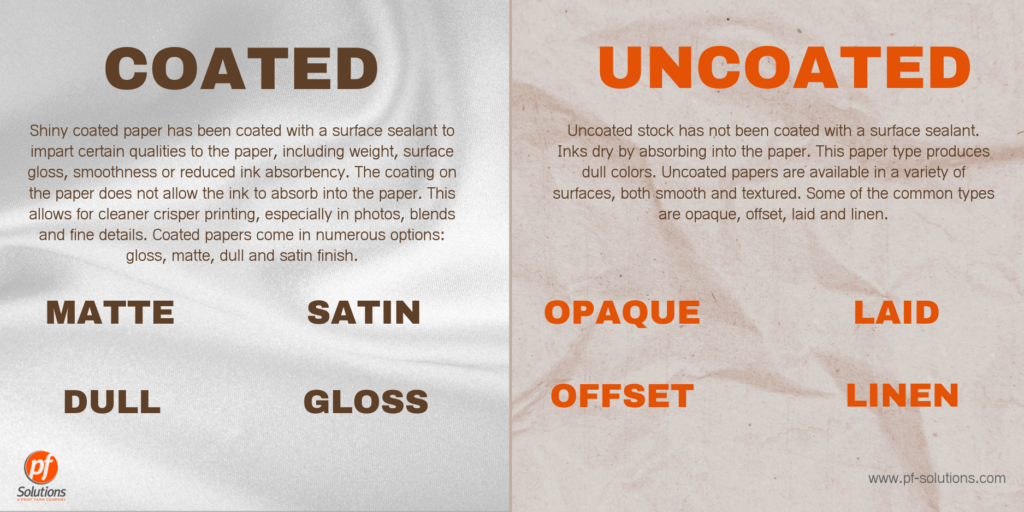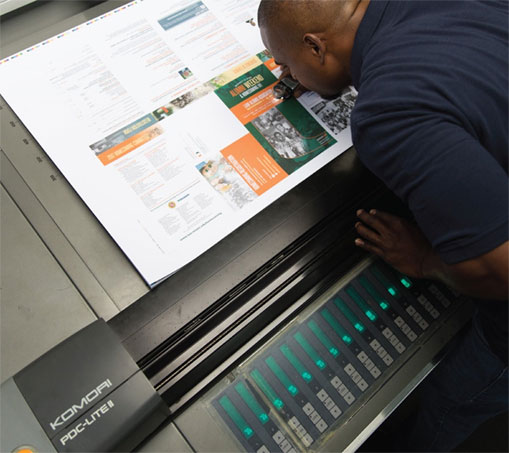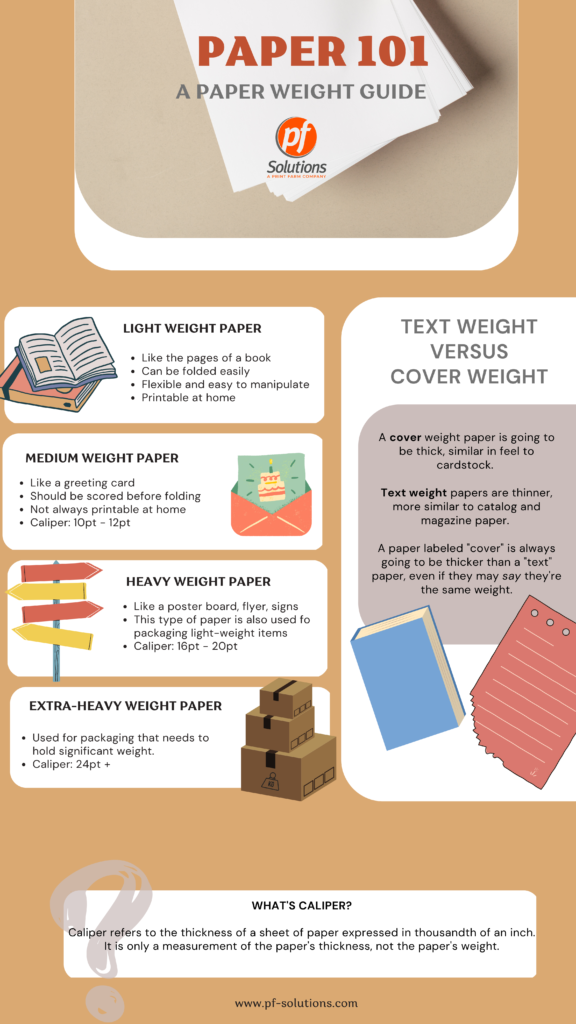Each print piece has the potential to be the last communication prospects receive from you before becoming a loyal customer. Making that lasting impression starts with paper. Choosing the right paper stock for your project is just as important as the design.
PF Solutions is minority-owned with over 100 years of combined experience throughout our expert commercial printing team in Miami. It’s what makes us the best commercial printing company in South Florida.
Here are the top three things to consider when looking into paper options:
1. Finish
The finish of the paper is a coating that is applied (or not applied) to your print project. There are pros and cons to each option, so it’s important to think about the purpose your print piece will serve your clients. There are a wide variety of finishes to many different papers, it’s best to discuss which paper to choose with one of our PF Solutions project experts.
Coated stock
This paper will have a glossy, silky feel. A gloss coating will have a glare when held up to a light. This is a great option if you’re printing a colorful design with less text and more visuals. A coated stock option can make your print piece resistant to wear and tear, making it longer lasting. Coated papers come in numerous options: gloss, matte, dull, and satin finish.
Uncoated stock
This paper will have a matte natural feel with no glare. A matte finish is known for its readability, making it a top option for text-heavy materials. It will also give more depth to black and white imagery, and add a softness to your design’s color palette. Uncoated stocks are usually bonds, offsets, cards, newsprint, and a host of others. They are typically porous, and this makes them soak up more substantial quantities of ink. Moreover, uncoated paper stocks do not dry fast, as the ink is mostly absorbed into the porous paper. This may present a problem when doing heavy ink coverage. However, the finished results of an uncoated stock can have a warm, inviting look to the end user.
Uncoated papers are available in a variety of surfaces — both smooth and textured.

In between glossy and matte, there are a wide variety of options to add the perfect touch to your print piece. This University of Miami Admissions Catalog uses a satin finish for a classy look.
2. Weight
The weight of your stock is how thick and heavy you want your materials to feel. For multi-page print pieces, you will choose your cover weight and your text weight. You can think of the cover weight as the cover of the piece – exactly like the cover of a book – and the text weight as the weight of the pages inside of it.
The weight of your stock is how thick and heavy you want the paper to feel. There are several ways to measure the weight of your stock. Weight can be measured three ways- by how many pounds a ream of 500 uncut pages weighs (written as lbs. or #, such as 80lbs. And 80#). The second is grams per square meter (written as gsm or g/m2, such as 60.2 gsm). The third is by the thickness of the paper, which is indicated as “points” (a 10 pt stock will be about 0.010 inches thick).
Here’s a calculator to help with your conversions:
PF Solutions offers a wide range of paper weights to work with your project. Weights are very important because it can impact the look and feel of the final product. Consult with one of our expert sales team to review these options and choose the right paper type for you.
3. Grade
A paper stock’s grade is generally determined by the print piece’s intended use. A stock’s grade takes its weight, thickness, and durability into account.
There are many paper grades, but these three are the most commonly used:
Text grade paper is a lighter, thinner paper. It’s your average sheet of paper found in flyers, letters, inside pages of brochures and catalogs. Text weight paper comes in a wide range of lighter weights before it transitions over to cover weight. Text grade is very important when factoring production thickness on brochures, catalogs and books.
Cover grade paper encompasses heavier, thicker paper stocks. It’s more durable and can be coated with a glossy finish or uncoated with a natural finish. Cover stock is mainly used as a durable protection to inside text stocks. There are a wide range of cover grades, so be sure to consult one of our PF Solution experts to best determine what will work for your project and budget.
This poster for Miami Dade Public Schools used a 100 lb. cover stock for a unique, attention-grabbing look.
Designing and envisioning your print project can be a tricky proposition. Choosing the right paper stock options can feel like learning another language, but the expert team at PF Solutions can make it simple. Our expert team have the right solution for anything you can dream up. At PF Solutions-we’re more than just printing.
Fill out this form to get your custom quote today.



